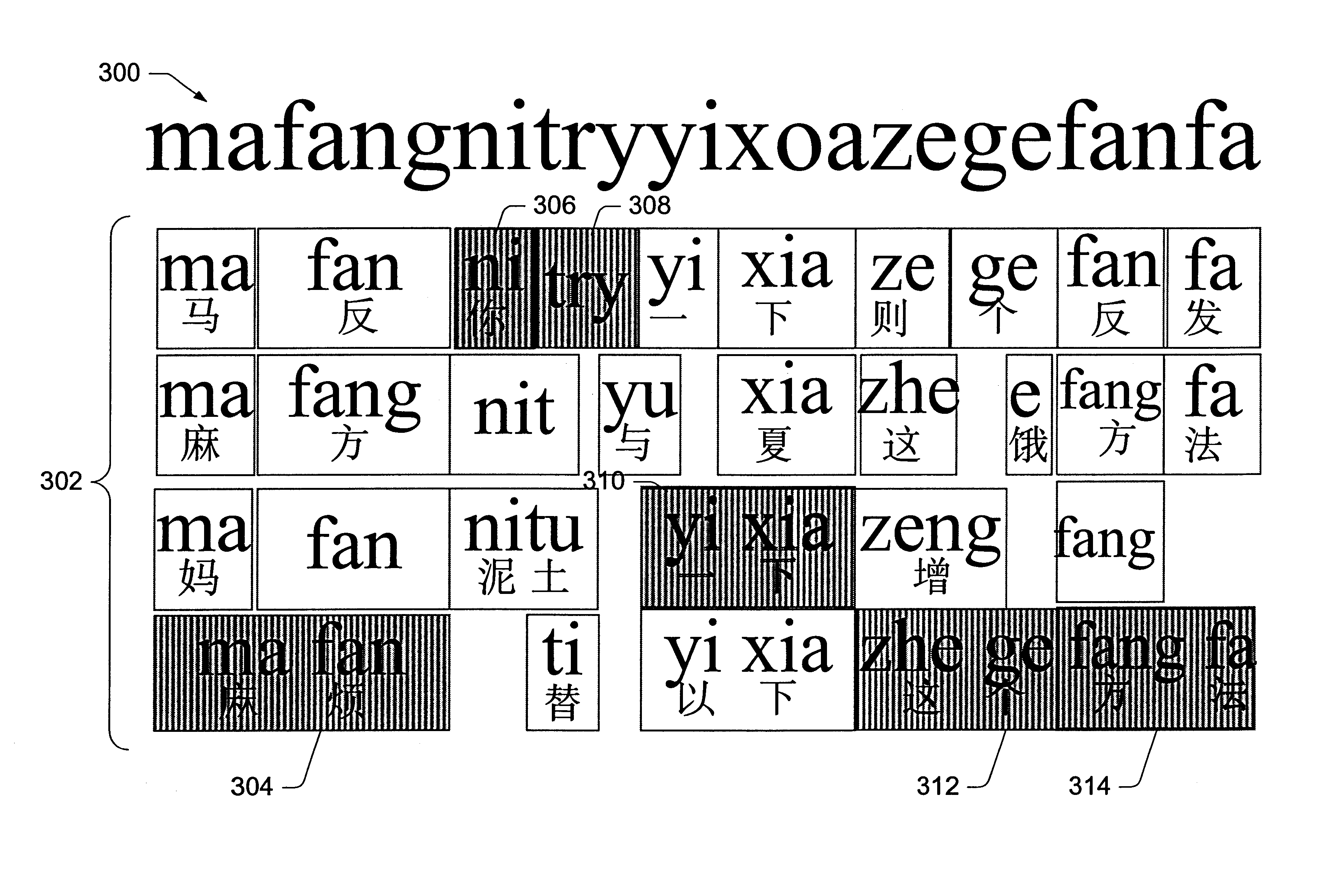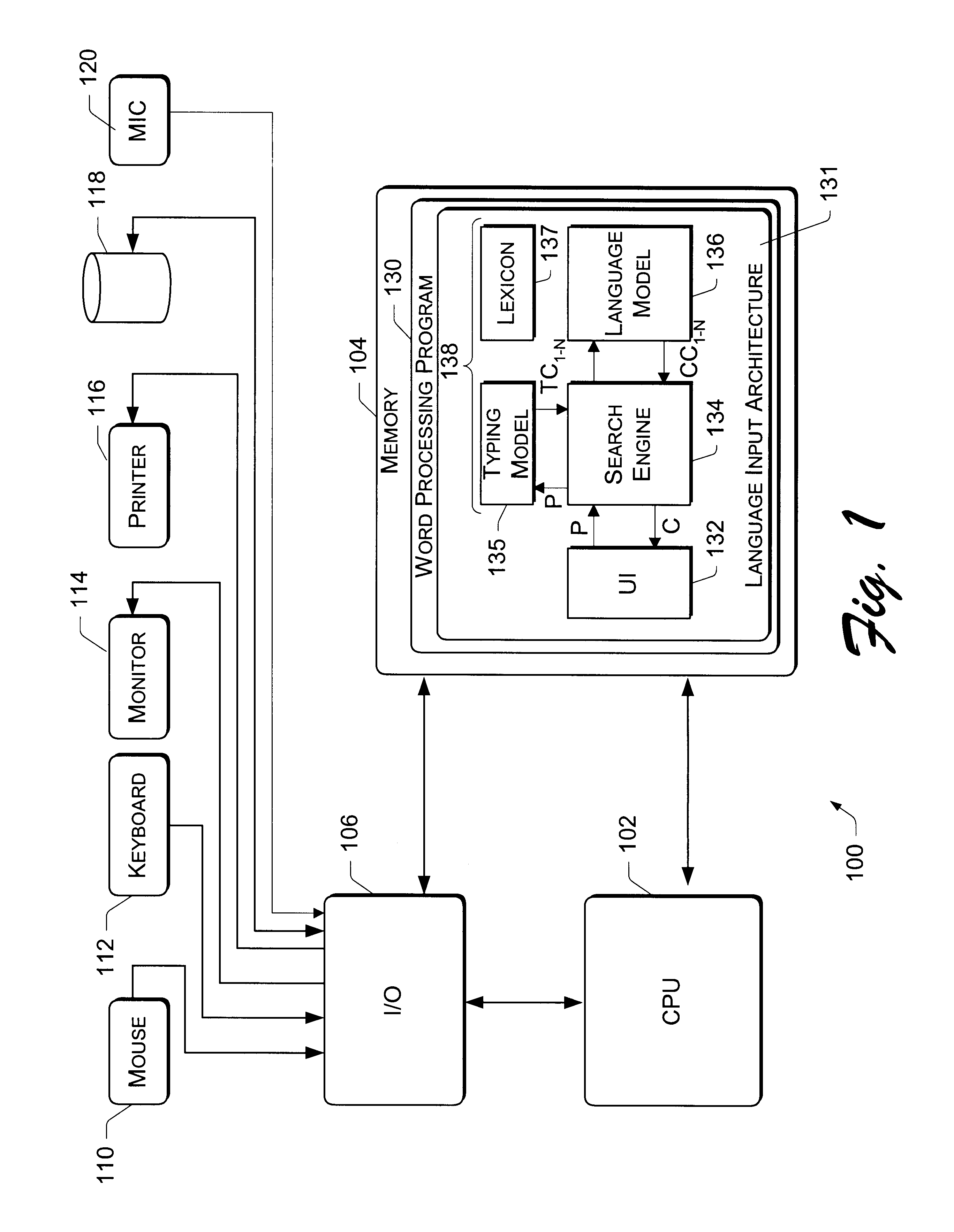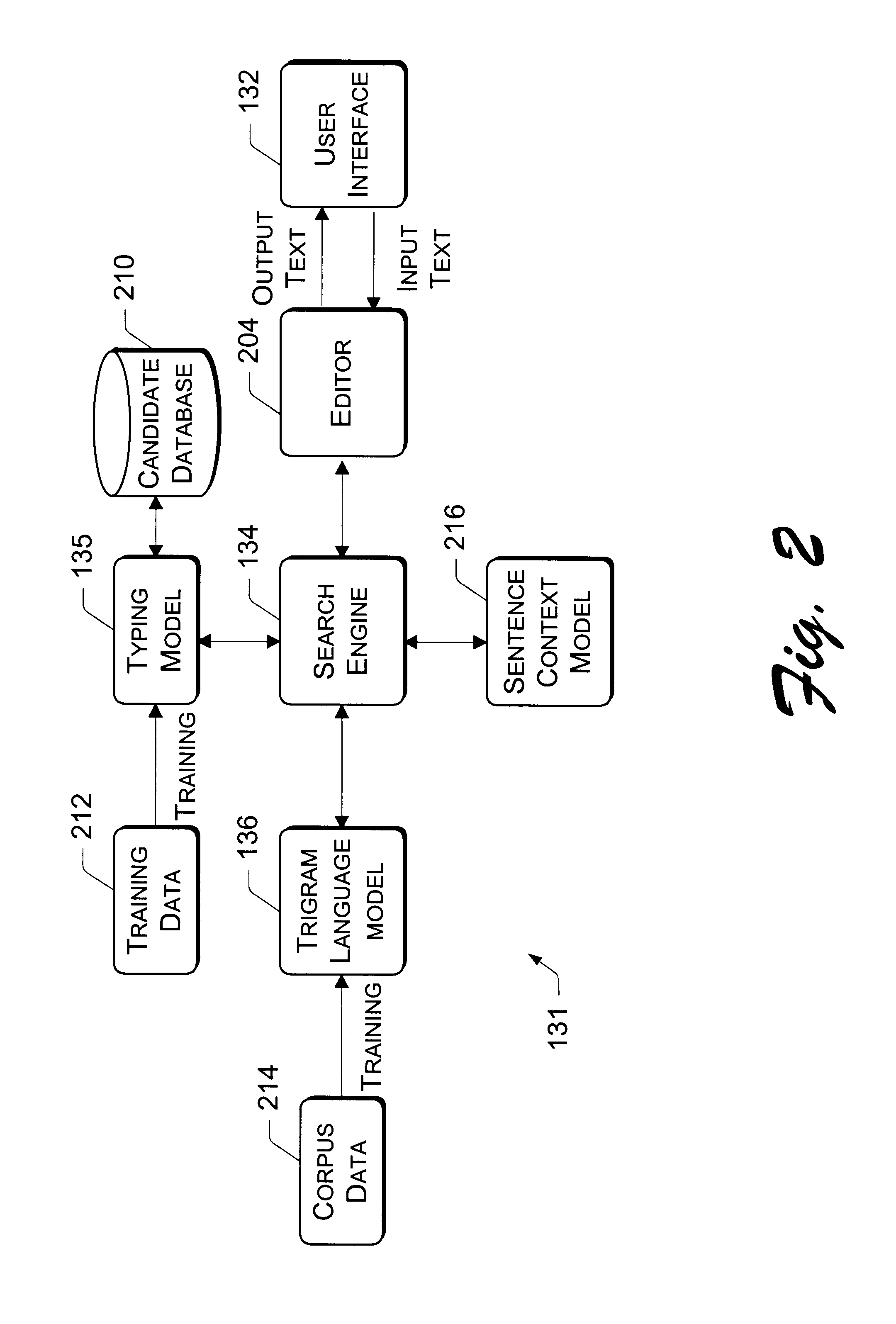Language input architecture for converting one text form to another text form with tolerance to spelling, typographical, and conversion errors
a technology of input architecture and text form, applied in the field of language input method and system, can solve the problems of user incorrect input of words or sentences into the computer, user simply does not know the correct spelling or sentence structure, and errors being introduced into the text, so as to achieve the effect of minimizing typographical errors and conversion errors
- Summary
- Abstract
- Description
- Claims
- Application Information
AI Technical Summary
Benefits of technology
Problems solved by technology
Method used
Image
Examples
Embodiment Construction
The invention pertains to a language input system and method that converts one form of a language (e.g., phonetic version) to another form of the language (e.g., written version). The system and method have error tolerance for spelling and typographical errors that occur during text entry and conversion errors that occur during conversion from one language form to another language form. For discussion purposes, the invention is described in the general context of word processing programs executed by a general-purpose computer. However, the invention may be implemented in many different environments other than word processing and may be practiced on many diverse types of devices. Other contexts might include email programs, spreadsheets, browsers, and the like.
The language input system employs a statistical language model to achieve very high accuracy. In one exemplary implementation, the language input architecture uses statistical language modeling with automatic, maximum-likelihoo...
PUM
 Login to View More
Login to View More Abstract
Description
Claims
Application Information
 Login to View More
Login to View More - R&D
- Intellectual Property
- Life Sciences
- Materials
- Tech Scout
- Unparalleled Data Quality
- Higher Quality Content
- 60% Fewer Hallucinations
Browse by: Latest US Patents, China's latest patents, Technical Efficacy Thesaurus, Application Domain, Technology Topic, Popular Technical Reports.
© 2025 PatSnap. All rights reserved.Legal|Privacy policy|Modern Slavery Act Transparency Statement|Sitemap|About US| Contact US: help@patsnap.com



